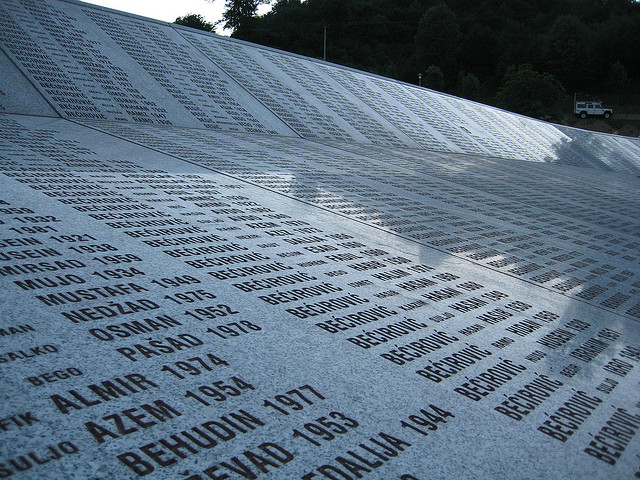 TV Belgrade News did not contain any footage from the battlefields, and majority of Serbian media did not pose any questions or investigated what had been going on in the war zone during the “conquest” of the UN safe area. For them, Srebrenica was just another episode of the war in which victims are taken for granted and not even counted anymore
TV Belgrade News did not contain any footage from the battlefields, and majority of Serbian media did not pose any questions or investigated what had been going on in the war zone during the “conquest” of the UN safe area. For them, Srebrenica was just another episode of the war in which victims are taken for granted and not even counted anymore
In the day when the Republic of Srpska Army, led by General Ratko Mladić, entered the safe zone of Srebrenica (July 11, 1995), the top story in Serbian media was an interview of Serbian President Slobodan Milošević with Time Magazine. “Peace in Six Months” announced Milošević from the cover of Time Magazine, and explained how Serbia had severed all its relations with the Bosnian Serbs’ leaders and described himself as being “just an ordinary man who, by the circumstance of his position, can help by promoting the policy of peace, one that is honest and objective to all sides”.
Serbian public broadcaster, RTS, took literally what President Milošević said about being interested only in achieving the “just peace” and about his having nothing to do with the Serbs across the Drina River. The most popular TV show of the most powerful media house, TV Belgrade Evening News at 7:30 (Dnevnik) did not include a single video made in Srebrenica or in any other war zone until July 30
And really, the end of the war was in sight, peace conferences were increasingly announced and media in Serbia followed the efforts of Serbian authorities to lift the UN sanctions. Reports from battlefield showed that General Mladić’s Army embarked on a campaign on Srebrenica and Žepa, that a tank was hit in NATO bombing of Serbian positions, and that Bosnian Serbs were capturing UNPROFOR members.
“There were reports on an ‘offensive of a broader scope’, there were mentions of the ‘liberation’ of certain towns and of ‘overpowering of Muslim forces’, there were bits of news about the ‘exodus of civilians and armed Muslims retreating in several directions over the near-by mountains”, Dušan Radulović, then Editor of Belgrade news bureau of Radio Free Europe, recalled the contents of the media reports of the time.
Through interviews with then editors of pro-regime and independent media, we attempted to create an overall picture of the reporting of Belgrade media of the time, two decades after the events in Srebrenica. We could not reach all the editors working for the war propaganda at the time, but despite their being unreachable or having disappeared from the media scene, written evidence of their work and media reporting survived to this day.
Rade Brajović, then Editor-in-Chief of Večernje Novosti daily, told Cenzolovka that the newspaper had the highest circulation in the territory of the former Yugoslavia, with average daily sales of around 500,000 copies.
“It was due to such high circulation that we felt obligated to be the first to report on everything that happened and to produce exclusive information. Two of my authors were killed in the war zones. It was not easy to obtain information. It was clear that a mass murder was committed in Srebrenica, but we paid equal attention to the crimes committed in Bratunac and in Podrinje.”
However, by merely browsing the most influential daily papers, such as Politika, Večernje Novosti, Politika Ekspres and Naša Borba, but also the weeklies such as NIN, Vreme, Duga and Intervju, and news programmes (Dnevnik) produced by TV Belgrade, it becomes clear that the majority of media in Serbia did not pose any questions or investigate the events in the war regions. For them, Srebrenica was merely another episode of the war in which victims were taken for granted and not counted anymore. Or were simply not mentioned at all.
No Picture and No Sound
Serbian public broadcaster, RTS, took literally what President Milošević said about being interested only in achieving the “just peace” and about his having nothing to do with the Serbs across the Drina River. The most popular TV show of the most powerful media house, TV Belgrade Evening News at 7:30 (Dnevnik) did not include a single video made in Srebrenica or in any other war zone until July 30.
While the massacre of civilians was going on some 150 kilometres away, Mira Marković was watching the stars, and wrote that “Belgrade has always been the starry light, just like the entire Earth, observed from a distant corner of the Universe, is only a star”
On July 11, TV Belgrade commenced their News programme with a report on the visit of Prime Minister Mirko Marjanović to some harvesters. It was only on the following day that TV Belgrade viewers could learn that something was going on some twenty kilometres from Serbian border: in 11th minute of the news they could hear Yasushi Akashi, Special UN Envoy to Bosnia and Herzegovina, saying the UN was not going to intervene in Srebrenica, and Boutros-Ghali, UN Secretary-General, saying that Blue Helmets were not going to retreat from Bosnia.
For days on end, several minute long packages were broadcast in a middle of the News, with international officials announcing various peace solutions and a conference of the Contact Group, with images of Karl Bilt, Thorvald Stoltenberg and Yasushi Akashi sharing the settee with Milošević. Not a single report contained any sound bites by any protagonist, statements were only read to the viewers.
There was not a single statement or footage of a Bosnian Serbs’ official, being soldier or civilian. The only frame showing Srebrenica that was broadcast during those twenty days was a video broadcast in the background of a TV comment by Tatjana Lenard (on July 23). It featured the landscape of this town and UN vehicles, which could have been filmed at any time at all.
But there were cameras in the battlefield after all. The Bosnian Serbs’ Army in its offensive in Srebrenica was followed by hand-picked reporters: crews of the Serbian Radio-Television from Pale, Belgrade journalist Zoran Petrović Piroćanac and cameramen of Republic of Srpska Army Information Service. For TV Belgrade, such footage was irrelevant, refugees were non-existent, and the war “in which Serbia has never took part” was to be ended through negotiations in which the key “peace factor” was played by Slobodan Milošević.
“Our aim is to bring Muslim terrorists to reason“
The press reported from the battlefields and relayed statements of civilian and military leaders of Bosnian Serbs, but without much in-depth analysis of reasons and consequences of the military operations in the UN safe areas.

“One Serbian Head – 25 Kilos of Flour“: Novosti July 17, 1995
Statement made by the General Ratko Mladić, according to which the aim of his forces was “to bring the Muslim terrorists to reason so that they cease their terrorist activities in the area that was relinquished to them by the good will of the Serbian people”, was generally accepted as legitimate explanation.
Most of the media in Serbia used services of the independent Beta News Agency in addition to that of Tanjug. “We did not have anybody out there in the field, and we reported on the events there indirectly, by relying on other sources“, Dragan Janjić, who followed the news from Bosnian battlefields as one of Beta Agency editors, told Cenzolovka.
“We cited international new agencies, such as the AP, AFP and Reuters, and had an exchange with Sarajevo-based Onasa news agency, which had to go through Ljubljana, and that was why sometimes we were to report late on these events. He had our correspondents in Pale and in Banjaluka. Despite that, we lacked the unbiased information on the full scope of the events there from the very beginning. International news agencies did not have their correspondents in Srebrenica region either, and their information about it was circumstantial as well“, Janjić told us.
In those days. nobody could see the full scope of the crimes. “Just like the mass graves were secretly dug out and moved to other places, the potential sources of information were buried under war propaganda and misinformation of different forms“, explained Dušan Veličković, then Editor-in-Chief of NIN weekly.
“Everything is Turning into a Huge Slaughter House“
Those who read Naša Borba daily learnt as early as July 12, from a statement of a representative of Doctors Without Borders Stefan Obere to Beta News Agency, that 20,000 to 30,000 people fled from Srebrenica to the UN base in Potočari on the previous day, that the artillery fired at them while they tried to escape and that there were many people wounded there.
TV report made by Zoran Petrović Piroćanac, which was broadcast by Studio B on July 15, included the footage showing corpses of some twenty men lying by the bullet-dotted wall of the village cooperative warehouse in Kravice. This footage did not bring about the expected public attention at the time, not even of the media that struggled to report as objectively as possible
The daily quoted the last radio report that was broadcast immediately before the fall of Srebrenica, authored by a local reporter Nino Ćatić:
“Everything is turning into a huge slaughter house. The killed and the wounded are constantly being transported to the hospital. It is impossible to describe it. Three deadly projectiles are fired on this town each second. Presently, there are 17 killed and 57 severely and lightly wounded people in the hospital. Can anybody at all in this world come to witness the tragedy that is happening to Srebrenica?“, AFP reported and Naša Borba daily published. Nino Ćatić was among the thousands of Bosniaks killed in only a couple of days that nobody knew nothing about in Serbia.
Reports of pro-government media, such as Politika daily (on July 13), featured statements of UNPROFOR representatives in an article entitled “Peaceful in UN base in Potočari”, according to which refugees offered no resistance at all, while the Republic of Srpska Army reported that their units “continued to neutralise Muslim terrorists in Srebrenica and Potočari area“, and that a part of shattered Muslim army continued to fight, but that the “loyal population of the area showed readiness to cooperate with the RS Army“.
In addition to that, the Republic of Srpska Army stated and Politika daily published, that eight soldiers were killed and 18 were seriously and/or lightly wounded in their operations.
“Safe Area Full of Arms“
At the time when the massacre of Srebrenica refuges was in full swing, Večernje Novosti (on July 13) published a statement made by General Mladić, according to which the civilians were safe, and in an article entitled “Safe Area Full of Arms”, the same daily wrote that “despite the agreement to demilitarize Srebrenica, Serbian forces evicted or captured thousands of soldiers and captured four tanks, howitzers and antitank systems“.

„Ethnic cleansing on voluntary basis“: Naša Borba July 14, 1995
“A number of Muslim soldiers fled to the hills, some of them were captured, and they are treated in compliance with the Geneva Conventions”, Novosti daily wrote.
Politika Ekspres daily published news from the battlefields on their seventh page, in the “World and Us” section. On July 15, same paper reported that the “transfer of 30,000 Muslims to middle Bosnia was concluded“ and that “all the wounded persons of the Muslim nationality who needed medical care were hospitalized in Bratunac, where Serbian doctors and other medical workers are doing their best to provide everybody with necessary medical care”.
On the same day (July 15), one could learn something quite different from the news published by Naša Borba daily: “Bosnian Serbs hold between 700 and 3,000 men in captivity in the football stadium near Bratunac”. “We have reports that some of them are very young, boys between 12 and 14“, stated UNHCR spokesman Rod Redmond.
Mirko Klarin, Naša Borba correspondent from Brussels, reported on the comment made by Christian Chartier, spokesman of the Hague Tribunal, that this was the “biggest, most brutal and barbarous act of ethnic cleansing in the history of the war in Bosnia so far, for which General Mladić is responsible“.
“Bodies Pile Up in Horror in Srebrenica“
On July 15, Studio B TV aired a piece by Zoran Petrović Piroćanac, who filmed soldiers of General Mladić on July 13 and 14 in and around Srebrenica. The report included a footage showing corpses of some twenty men lying by the bullet-dotted wall of village cooperative warehouse in Kravice. As unbelievable as it may seem, footage did not bring about the expected public attention at the time, not even of the media that struggled to report as objectively as possible.
In his report entitled “Painting of the Town Begun” published by Intervju weekly on July 21, Zoran Petrović Piroćanac described how Mladić handed out chocolates to refugees, how Serbs in tears hugged their Bosniak neighbours bringing them bread and milk, and how “the Muslims shot each other“.
“If one chooses not to write about the things one sees, that is anti-journalism. If my journalists wrote about their people in a more engaged manner, I am proud of that. It is a natural thing to do, to love one’s own people is absolutely natural, it is just like loving one’s own family more than others”, Rade Brajović, then Editor of Večernje Novosti daily, explained in his statement for Cenzolovka
Piroćanac glorified Generals Mladić and Krstić, and wrote: “The person authoring this report shall responsibly report on the number of 2,000 to 3,000 soldiers killed in the battle for town of Srebrenica and during Muslim attempts to break out of the encirclement“. There was no mention of dead bodies in the village of Kravice at all.
It was only later on, during the trial before the Hague Tribunal, that the public learnt that after the broadcast in which the footage showing thekilled civilians „slipped through“ by mistake, the representatives of the Republic of Srpska confiscated the tapes.
“Piroćanac was not a person anyone could trust completely“, Dušan Mašić, a Radio B92 journalist, explained why Belgrade independent media did not report on this footage.
Dragan Kojadinović, then Editor-in-Chief of Studio B, could not recall any reaction following the programme, because, as he explained: “Srebrenica was merely one of the events that we reported on routinely”.
“We were a media house of the opposition, we were in a constant clash with the ruling regime, but we struggled to present everything that happened in a trustworthy manner, not thinking about any consequences at all”, Kojadinović told Cenzolovka.
For Robert Block of the Independent and NIN’s author Dragan Čičić, a the piece of film aired on Studio B was the motive to try to get into Srebrenica. They were not allowed to enter the territory of the Republic of Srpska on the Ljubovija border crossing, but some people crossing the border to come to Serbia told them something about the events there. The article entitled “Bodies Pile Up in Horror of Srebrenica“, published by the Independent on July 17, was the first article in international press to point to mass crime.
Dragan Čičić wrote in NIN on July 21 that the fate of the men from Srebrenica is “a complete mystery”. He cited a conversation he had with a bus driver who delivered some food to the female and child refugees in Potočari couple of days earlier. “I spent somewhat more than an hour in Potočari and I have not seen a single man younger than 70“, the bus driver told Čičić.
Čičić also wrote that UNHCR representatives “in Bratunac heard shots from the direction of the stadium, but that they were told that it was only the soldiers celebrating their victory“.
“Rumours about the mass executions were impossible to check, because the Government in Pale have not allowed a single international organization to visit prisoners of war yet”, Čičić wrote at the time.
Starry Light of Belgrade
As opposed to the Vreme and NIN weeklies, which followed the war operations and peace negotiations in great detail, Duga weekly celebrated its 50th anniversary, without publishing a single piece of news from the war zone. Mira Marković chose not to mention these events in her famous Diary as well. On July 12, she watched the stars from her garden, while the massacre of civilians went on only 150 kilometres away, and wrote that “Belgrade has always been the starry light, just like the entire Earth, observed from a distant corner of the Universe, is only a star”.
“Keeping silent about it or minimizing it – that was the official policy, media control was overpowering and any attempt at wring anything about it raised the comments of the ‘journalists on watch duty’ who did not spare the negative attributes”, Dušan Radulović told us.
“Still the main reason why it took so long for the news from Srebrenica to reach cover pages, apart from the ‘patriotic’ self-censorship, was that it often resembled rumours that were impossible to verify. I personally know some serious, independent and brave media who hesitated to publish information they got, exactly for those reasons”, Dušan Veličković explained to Cenzolovka.
“Executioners in Their Genes“
Parallel with scarce, but horrific information disseminated by independent media about the Srebrenica victims, pro-government media reported on crimes against Serbs.
Večernje Novosti (July 17) published an article entitled “One Serbian Head – 25 Kilos of Flour“, on “the torture suffered by the Serbs in Srebrenica by Alija Izetbegović’s Army“ and on how “Kemal Mehmedović and Hajrudin Memišević carried 12 severed Serb heads through the town, impaled on stakes „, which was allegedly witnessed by a Bosniak prisoner. Politika Ekspres (July 19) started a serial entitled “Executioners in the Genes“, written by Simonida Simonović, about the crimes committed by the Croats and Bosniaks against Serbs.
Only the journalists from the selected media, such as Večernje Novosti or Politika Ekspres, were allowed to enter Srebrenica and publish their reports about the return of Serbs to their destroyed homes from July 18 on, about the church that was turned into a stable and about an old woman, a Serb, who was found slaughtered.
When asked why his paper reported much more about the crimes against Serbs at the time of the mass shooting of Muslim refugees, Rade Brajović replied:
“If you are going to weigh which stuff there is more of in the newspapers and which stuff there is less, then it is the end of journalism. It was easier learn about crimes against Serbs, it was easier to obtain information about these events“.
In the 1990s as well, Večernje Novosti was considered biased, war mongering reading stuff, but despite that, Brajović could never acknowledge such criticism, either back then or now:
“If one chooses not to write about the things one sees, that is anti-journalism. If my journalists wrote about their people in a more engaged manner, I am proud of that. It is a natural thing to do, to love one’s own people is absolutely natural, it is just like loving one’s own family more than others.”
“Military operation Oluja (Storm) devoured the events of Srebrenica. Oluja took place only two weeks later and when the long lines of refugees headed to Serbia, other stories became bygone. Information received from various sources, including the satellite footage broadcast on CNN that showed digging of mass graves, were received with reserve, simply because the scope of the crime that it depicted surpassed everything we could possibly imagine“, Dušan Mašić, then Radio B92 journalist told Cenzolovka
International press, however, wrote more and more about the crimes their reporters learnt about from refugees arriving to Tuzla. Naša Borba (July 22-23) relays from foreign press the testimonies of refugees struggling to escape through the woods for days, on how they were decimated during that time, and on how 1,600 people were killed in a series of ambushes in just one day.
Some claimed that Bosnian Serbs, disguised as Blue Helmets, lured refugees out of the woods and then shot them on the spot, but the reporters distanced from those claims saying that “there was no independent confirmation that such things actually happened“.
Naša Borba, but Večernje Novosti daily as well (July 18), quoted Emma Bonino, European Commissioner of the European Community Humanitarian Office, who said that after the fall of Srebrenica “at least 12,000 people were gone missing without a trace“, four busses with young people and women setting out of Srebrenica were reported, but that “they never arrived to Tuzla or any other town in the territory controlled by Bosnian Government“.
One could tell nothing about the fate of the “missing” Bosniaks for quite a long time. “I cannot tell whether our general public got a complete picture about that crime at the time. Probably not“, Rade Brajović told us. “Such stories followed later on. It was only afterwards that mass killings became a known fact.“
In September 1995, Dušan Mašić managed to visit arefugee camp near Tuzla. “Even then, the women there did not know what had happened to their husbands, brothers or sons. They still hoped that they were somewhere else, alive and captured“, Mašić told us.
“The Initial Reaction Was Doubt“
Reporting on Srebrenica lasted for a couple of days only. This was followed by the new military operations in Žepa, by opening of new front lines, such as the ones in Bihać, on Igman, in Grahovo, and then by announcements of the Croatian Army offensive on Krajina.
“Military operation Oluja (Storm) ‘devoured’ the events of Srebrenica,“ Dušan Mašić said. “Oluja took place only two weeks later and when the long lines of refugees headed to Serbia, other stories became bygone. Moreover, information received from various sources, including the satellite footage broadcast on CNN that showed digging of mass graves, were received with reserve, simply because the scope of the crime that it depicted surpassed everything we could possibly imagine. It was so huge that it could not fit any imaginable logical framework. That was why the initial reaction was doubt“, Mašić told us.
“There was no awareness of the scope of the crime”, Dragan Janjić agreed. “We could not verify the accuracy of available information on-site, media were already exhausted from the relentless propaganda war. It was the end of the war and nobody, not even the international community, had any interest in making a big story out of it at that moment, because everyone’s focus was on the plans for peace negotiations and end of war.“
Independent media, with their editorial policies directed against the politics of Slobodan Milošević and anti-war, showed restraint and disbelief before the scope of this crime. The pro-government ones denied the crime altogether.
Twenty years on, and the overall impression is still devastating. Despite all the insight in the severity of this crime, disagreements on whether there was a crime of genocide in Srebrenica, on the actual number of people killed there, on whether they were civilians or soldiers, create a sordid landscape of a society incapable of facing the crime or honouring the victims. Media undoubtedly have their fair share of blame for this.
Top photo: Flickr / Photo RNW.org



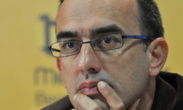

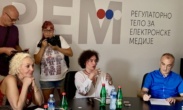

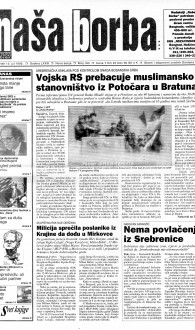
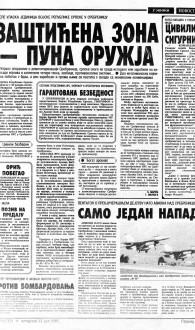
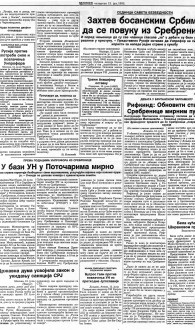
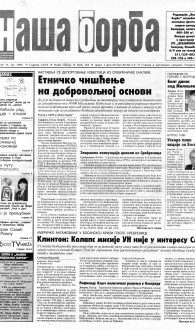
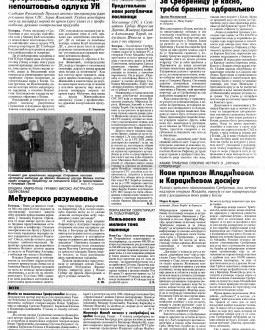
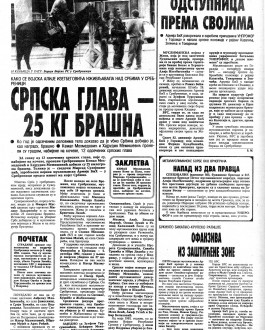
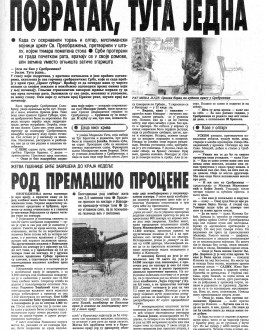
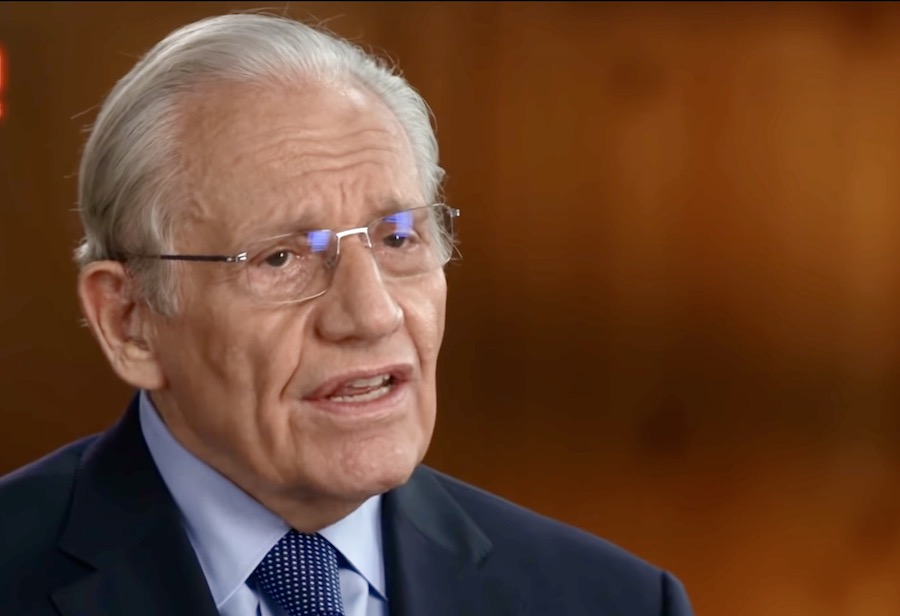 Zar i ti, sine Bobe?
Zar i ti, sine Bobe?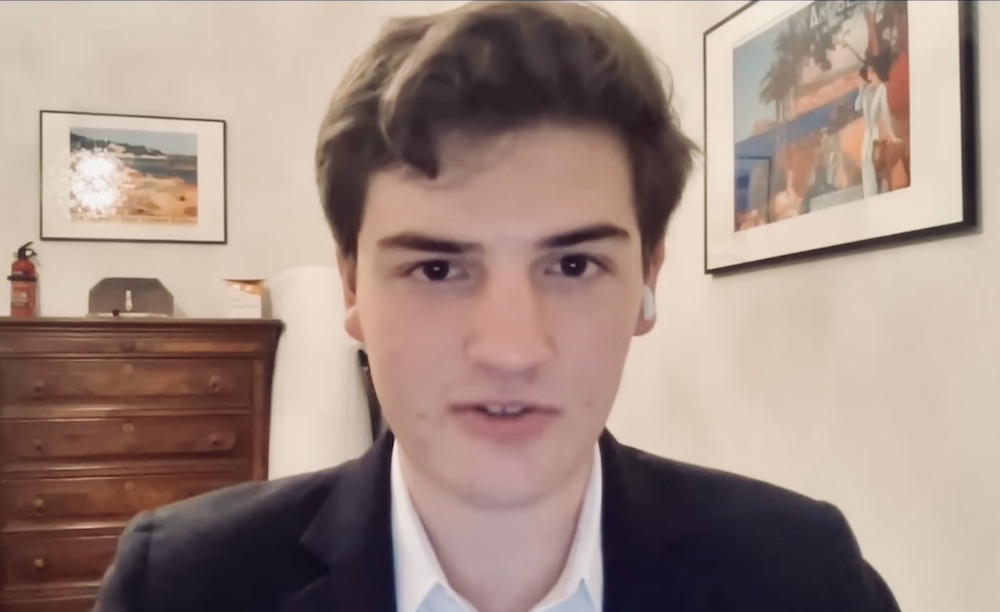 Predsednik Stenforda podnosi ostavku pošto je brucoš u studentskom listu objavio dokaze o nedostacima njegovih istraživanja
Predsednik Stenforda podnosi ostavku pošto je brucoš u studentskom listu objavio dokaze o nedostacima njegovih istraživanja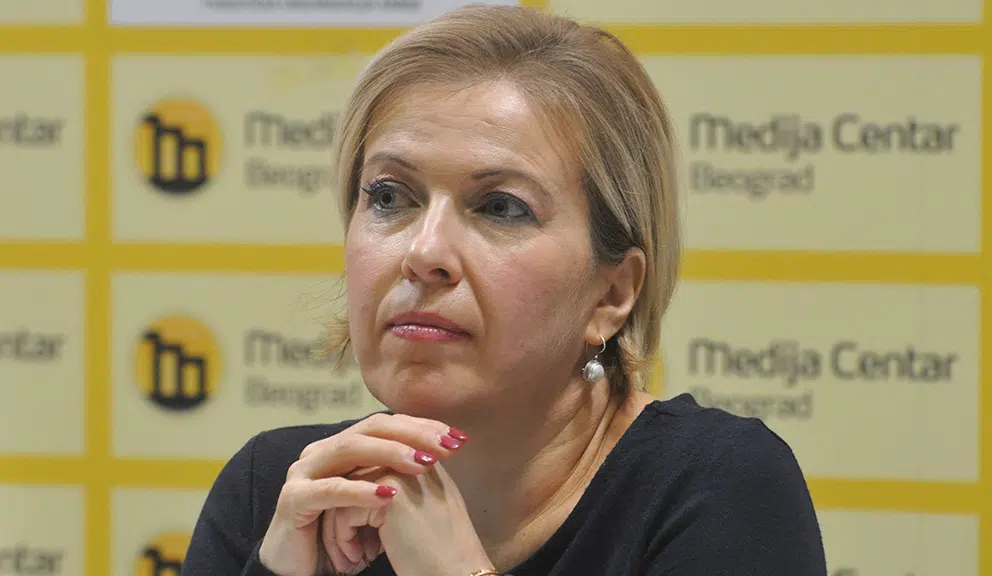 Tatjana Lazarević, Kossev: Udaraju tamo gde je najslabije, u medije koje i kosovska i srpska vlast targetiraju kao vinovnike zla
Tatjana Lazarević, Kossev: Udaraju tamo gde je najslabije, u medije koje i kosovska i srpska vlast targetiraju kao vinovnike zla
Ostavljanje komentara je privremeno obustavljeno iz tehničkih razloga. Hvala na razumevanju.